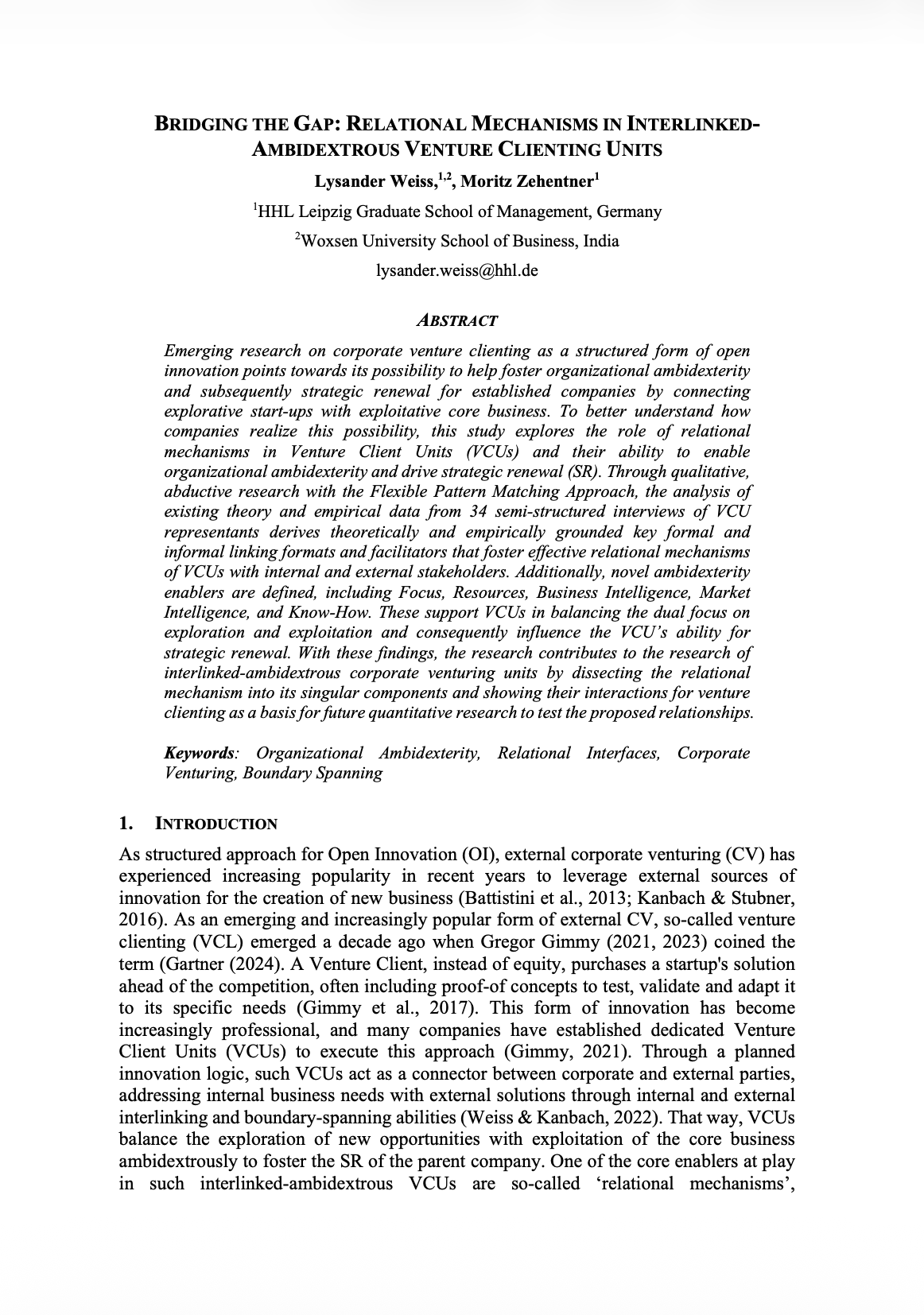Emerging research on corporate venture clienting as a structured form of open innovation points to its potential to foster organizational ambidexterity and thus strategic renewal for established firms by connecting explorative startups with the exploitative core business. To better understand how firms realize this opportunity, this study examines the role of relational mechanisms in venture client units (VCUs) and their ability to enable organizational ambidexterity and drive strategic renewal (SR). Through qualitative, abductive research using the flexible pattern matching approach, the analysis of existing theories and empirical data from 34 semi-structured interviews with VCU representatives derives theoretically and empirically grounded formal and informal linkage formats and facilitators that promote effective relational mechanisms of VCUs with internal and external stakeholders. In addition, new ambidexterity enablers are defined, including focus, resources, business intelligence, market intelligence and know-how. These support VCUs in balancing the dual focus on exploration and exploitation and consequently influence the VCU's ability to strategically innovate. With these findings, the research contributes to the study of interlinked-ambidextrous corporate venturing units by decomposing the relational mechanism into its individual components and highlighting their interactions for venture clienting as a basis for future quantitative research to test the proposed relationships.
Bridging the Gap in Venture Clienting
Relational Mechanisms in Interlinked-Ambidextrous Venture Clienting Units


Publication Data
Publication:
2025
Language:
English
Pages:
14
Download size:
462 KB
Format:
PDF
Authors
Dr. Lysander Weiss
Partner
venture.idea
Moritz Zehentner
HHL Leipzig Graduate School of Management
Content
- Introduction
- Theoretical background
- Methodology
- Results
- Discussion & contribution
Download the English paper now
Oops! Something went wrong while submitting the form.
Further publications

